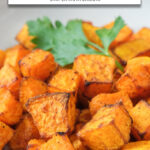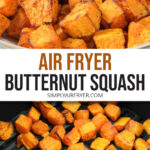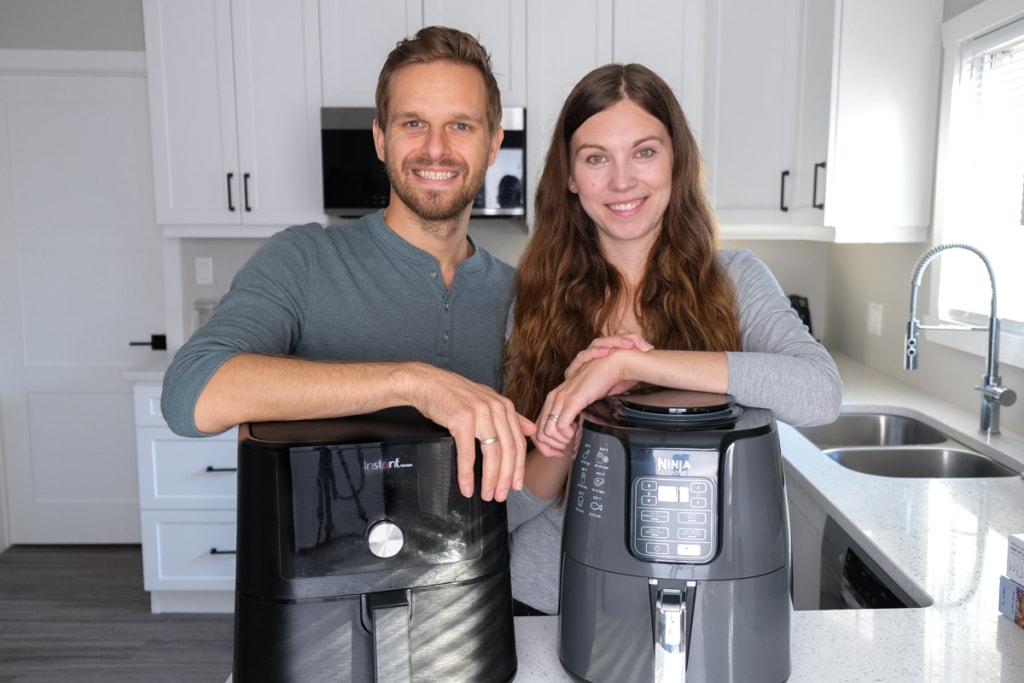The exact cook time can vary. Read below for our tips!
Looking for a tasty squash side dish? Air fryer butternut squash is for you!
Made with butternut squash, a bit of oil, and your combination of spices, these butternut squash bits are tender on the inside yet slightly crispy on the outside.
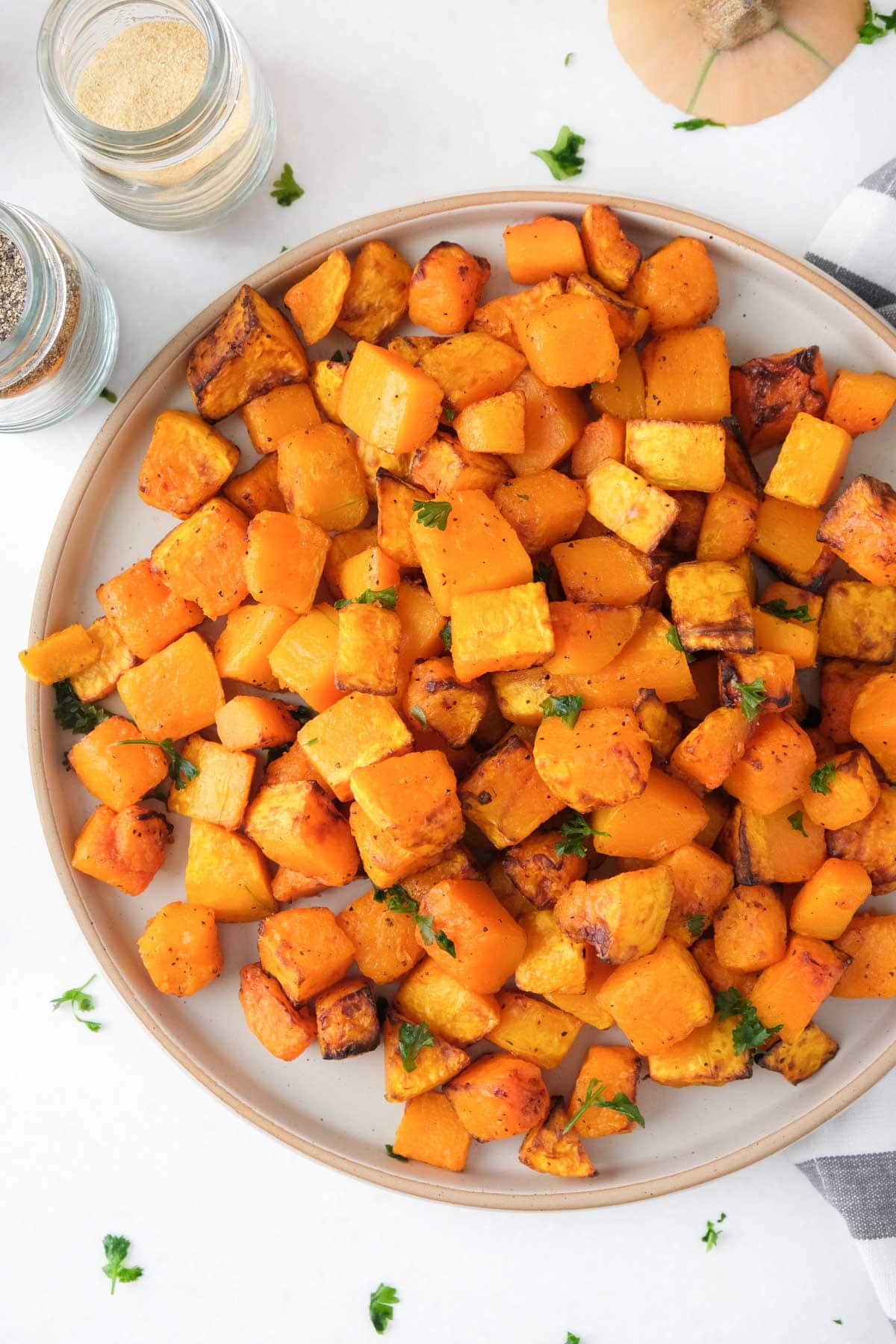
Ingredients
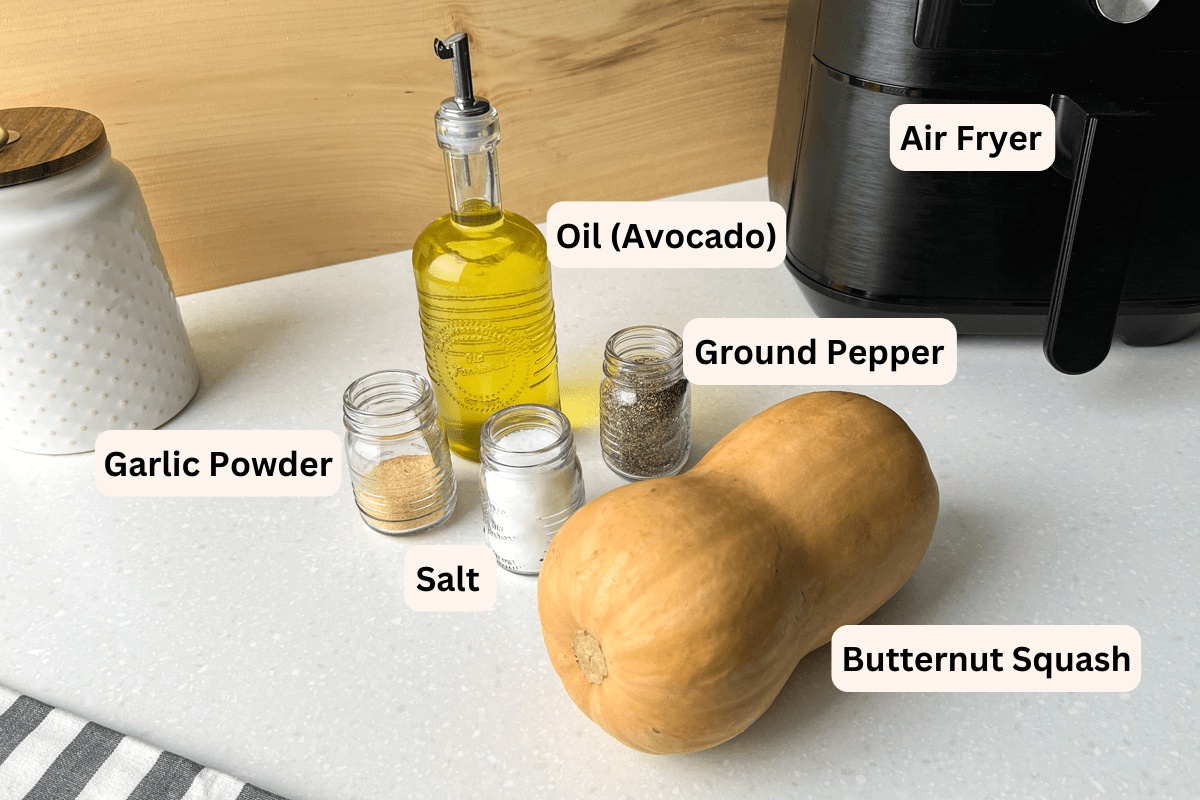
Here are the ingredients you’ll need for this recipe:
- Butternut squash – You’ll need about 4 cups of diced squash (1/2 – 3/4 inch cubes)
- Avocado oil – 2 teaspoons should do it. You can also use other oil like sunflower oil or canola oil.
- Salt – 1/4 teaspoon, more or less to taste.
- Ground Pepper – 1/4 teaspoon, more to taste.
- Garlic Powder – 1/4 teaspoon, more or less to taste. This spice is optional but we always like it.
Recipe Tips
Before you make butternut squash in the air fryer, have a read through these few recipe tips:
- Keep in mind: this is a recipe for fresh butternut squash. If you have frozen, you can check out how to prepare frozen butternut squash in the air fryer!
- If you have to peel/cut the butternut squash first, you can follow these steps: First, cut the ends off. Then peel the squash using a vegetable/potato peeler. Once peeled, cut the butternut squash in half lengthwise. Remove the seeds with a spoon. Now cut the squash into long strips and then into small cubes, approximately 1/2 – 3/4 inch thick.
- You might also be interested in making butternut squash fries in the air fryer – same squash, different form!
- You can change up the spices to suit your preferences. We didn’t add any hot spices like cayenne pepper but you definitely can!
- Be sure to try a piece or two when they are looking crispy on the outside. The squash pieces can be deceivingly soft on the inside while still looking like they need to be cooked longer!
- Since every air fryer is different (and the size of the overall squash cubes may vary), you cook time might vary slightly. Just make sure that the inside is soft.
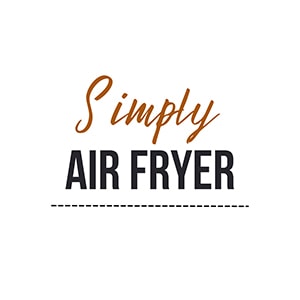
Recipe Video
Step by Step Instructions
If you want to see exactly how we make our butternut squash in the air fryer, you can follow the recipe photos in this section.
Otherwise, you can skip to the recipe card below to get the times and temperatures for air frying butternut squash without the photos.
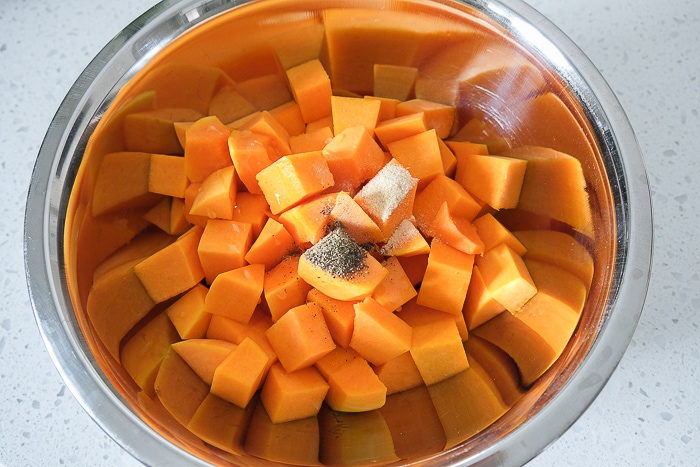
We’re starting with already cut-up butternut squash. If you have to peel and cut your butternut squash first, you can use the steps in the recipe tips section above as guidance.
Add the butternut squash cubes into a medium-sized bowl. Also add the oil, salt, pepper, garlic powder, and/or other spices of your choice to the bowl.
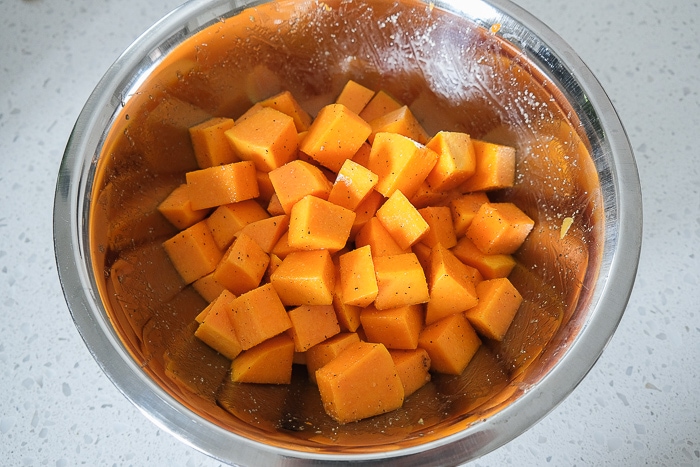
Toss everything until the butternut squash is evenly coated in oil and spices.
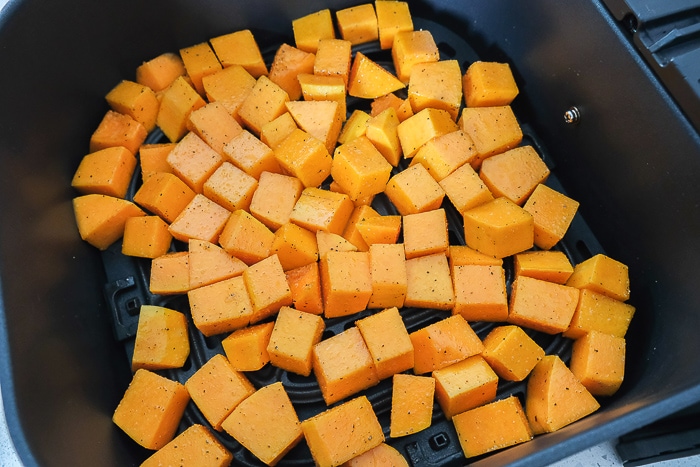
Preheat the air fryer to 380 degrees Fahrenheit. When it is hot, add the butternut squash.
The pieces should be distributed in one even layer with little overlap so that they cook evenly.
If you can’t fit that much squash into your air fryer, you can make less or cook it in two batches.
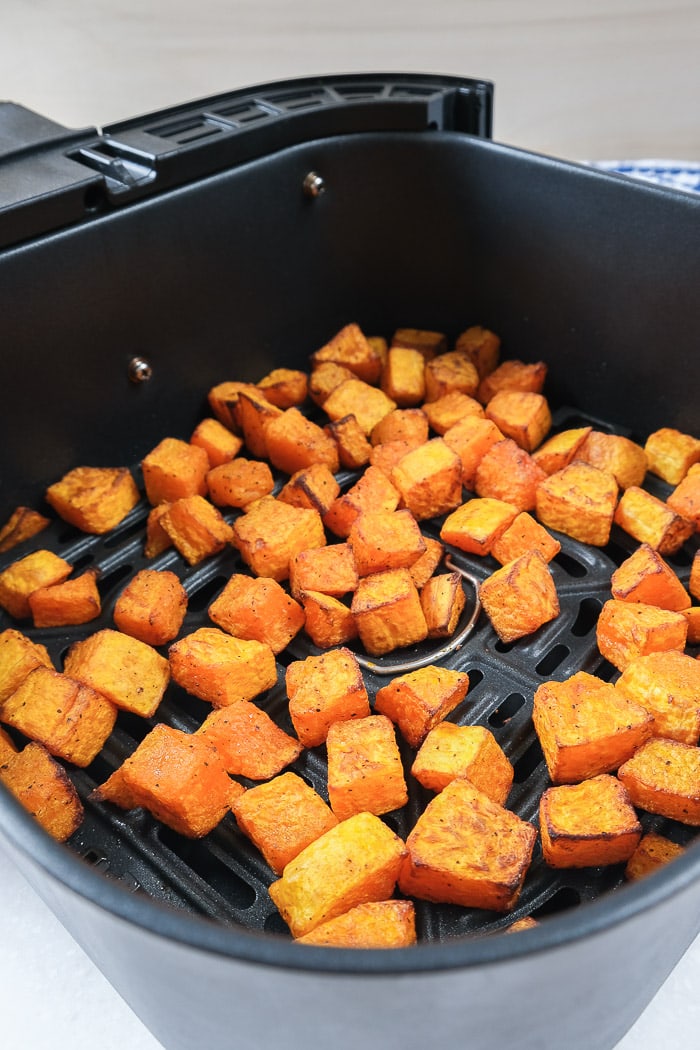
Cook the squash for 18-22 minutes until tender and lightly browned on the outside.
Shake the air fryer basket every 5 minutes to help turn/move the squash cubes. Since every air fryer is slightly different, your cook time can vary.
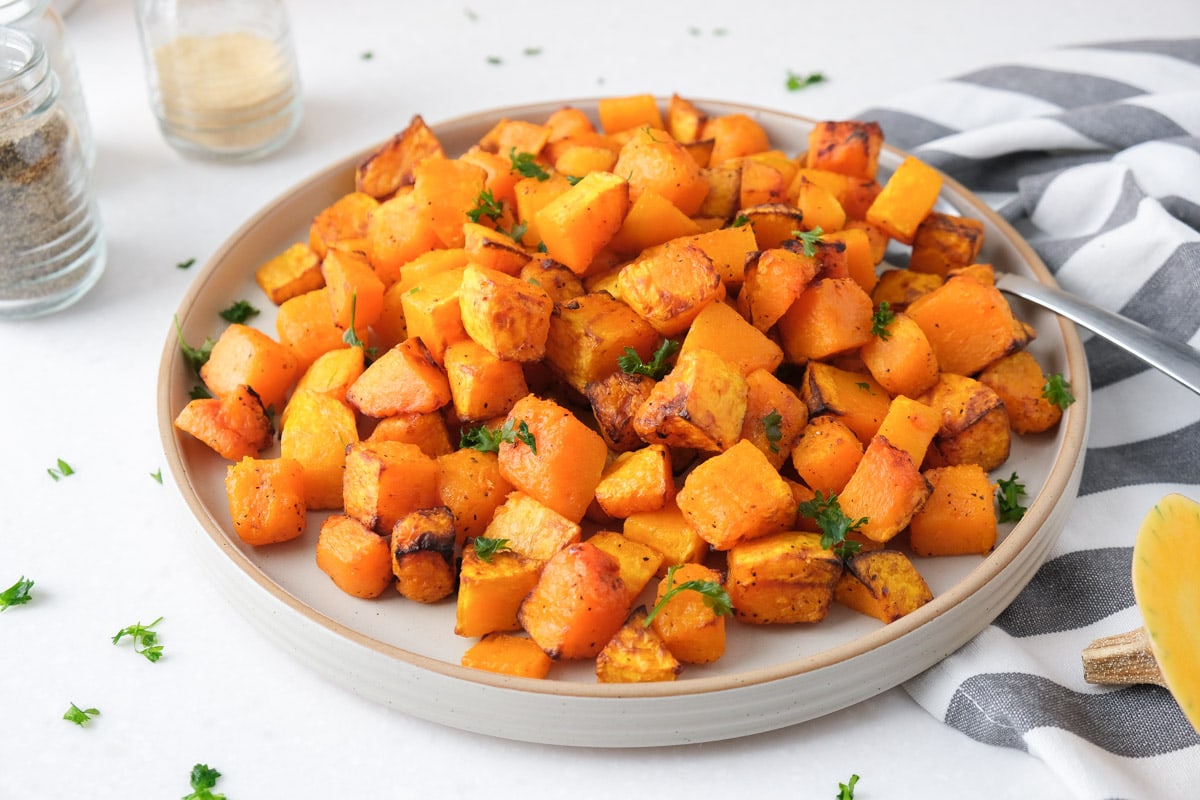
When the butternut squash is done, remove it from the air fryer. You can garnish it with a little bit of (chopped) parsley before serving if desired. Enjoy!
Storage Tips
We would recommend eating air-fried butternut squash while it’s warm and fresh.
If you end up having leftovers, you can store them in a sealed container in the fridge for 4-5 days. Just keep in mind that it will get mushier as time passes because of the water content.
To reheat it, you can toss the butternut squash cubes back in the air fryer to eliminate some of the excess moisture but microwaving is also a fast option.
What to Serve Air Fryer Butternut Squash With
Since squash is very much a fall and winter food, we like eating air-fried butternut squash as a side dish to filling dinner options like roast beef with mashed potatoes and gravy.
Butternut squash also goes well as a side for crispy chicken drumsticks with a grain like rice. It’s also go those seasonal flavor vibes that suit turkey breast and brussels sprouts.
The slightly sweet taste and soft yet crispy texture make it pretty versatile so try it out with other meal ideas. We even sometimes put it in a cold pasta salad as an ingredient and it is quite good!
Related Recipes
For more tasty side dishes, check out these other vegetable side dishes that pair great with lots of different main ideas!
- Air Fried Spaghetti Squash
- Air Fryer Acorn Squash
- Air Fryer Onions
- Easy Air Fryer Bacon Wrapped Asparagus
- Air Fried Turnip Fries
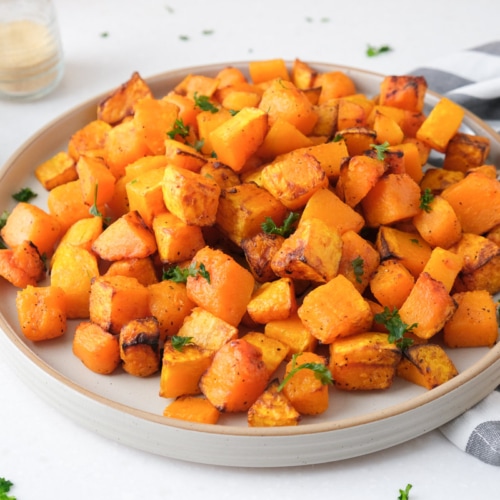
Air Fryer Butternut Squash
Ingredients
- 4 cups butternut squash, 1/2 – 3/4 inch cubes
- 2 teaspoons avocado oil
- 1/4 teaspoon salt, more to taste
- 1/4 teaspoon pepper, more to taste
- 1/4 teaspoon garlic powder
Instructions
- Add the butternut squash cubes into a medium-sized bowl. Also add the oil, salt, pepper, garlic powder, and/or other spices of your choice to the bowl. Toss everything until the butternut squash is evenly coated in oil and spices.
- Preheat the air fryer to 380 degrees Fahrenheit.
- When it is hot, add the butternut squash. The pieces should be distributed in one even layer with little overlap so that they cook evenly. If you can't fit that much squash into your air fryer, you can make less or cook it in two batches.
- Cook the squash for 18-22 minutes until tender and lightly browned on the outside. Shake the air fryer basket every 5 minutes to help turn/move the squash cubes. Since every air fryer is slightly different, your cook time can vary.
- When the butternut squash is done, remove it from the air fryer. You can garnish it with a little bit of (chopped) parsley before serving if desired. Enjoy!
Notes
- If you have to peel/cut the butternut squash first, you can follow these steps: First, cut the ends off. Then peel the squash using a vegetable/potato peeler. Once peeled, cut the butternut squash in half lengthwise. Remove the seeds with a spoon. Now cut the squash into long strips and then into small cubes, approximately 1/2 – 3/4 inch thick.
Nutrition
This nutritional information has been estimated by an online nutrition calculator. It should only be seen as a rough calculation and not a replacement for professional dietary advice.
